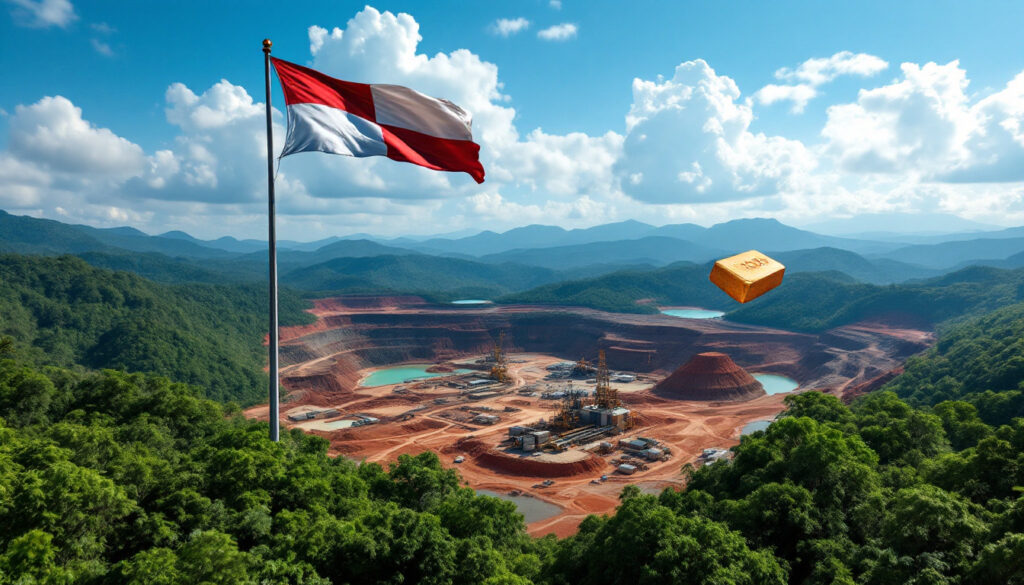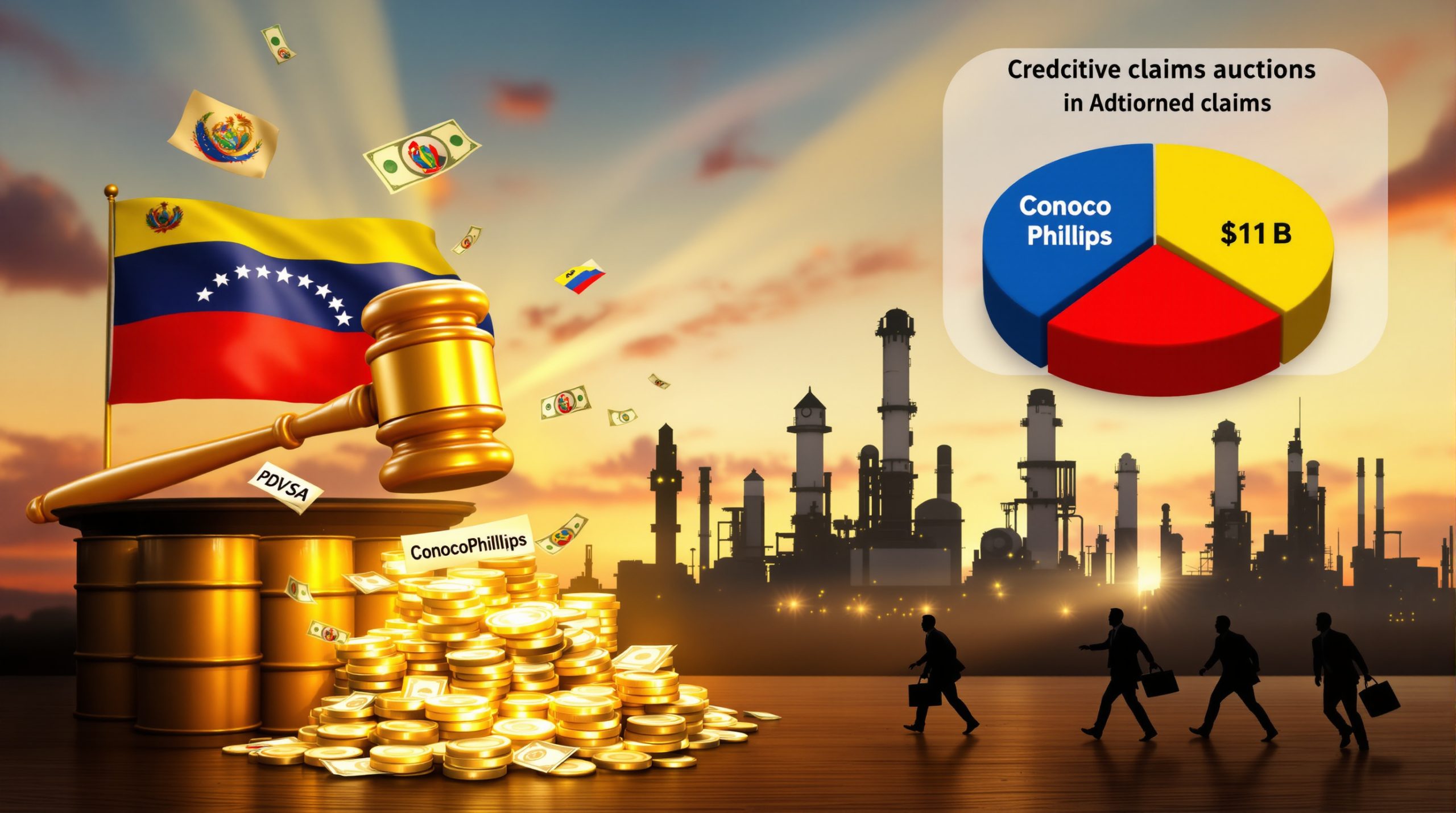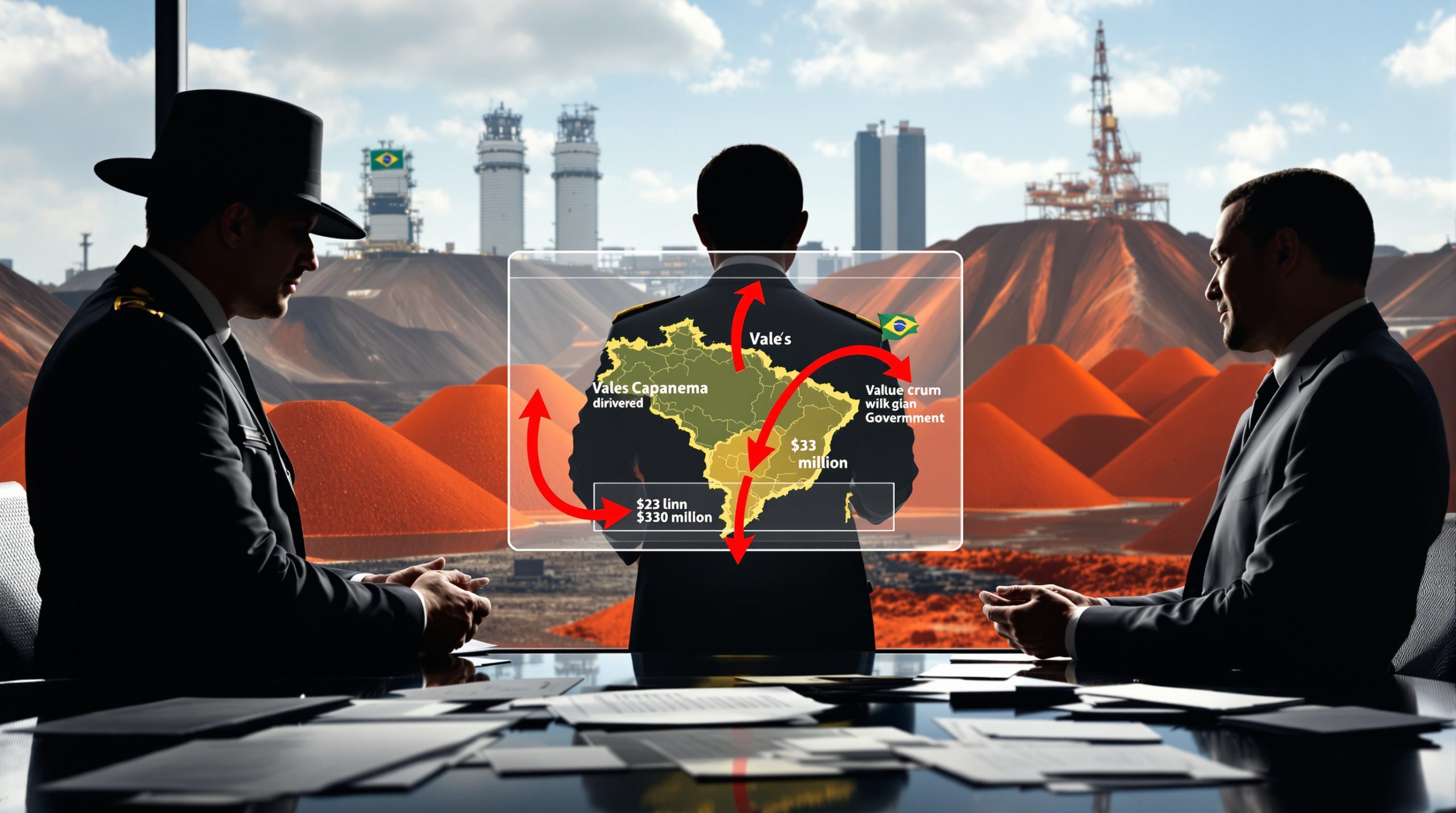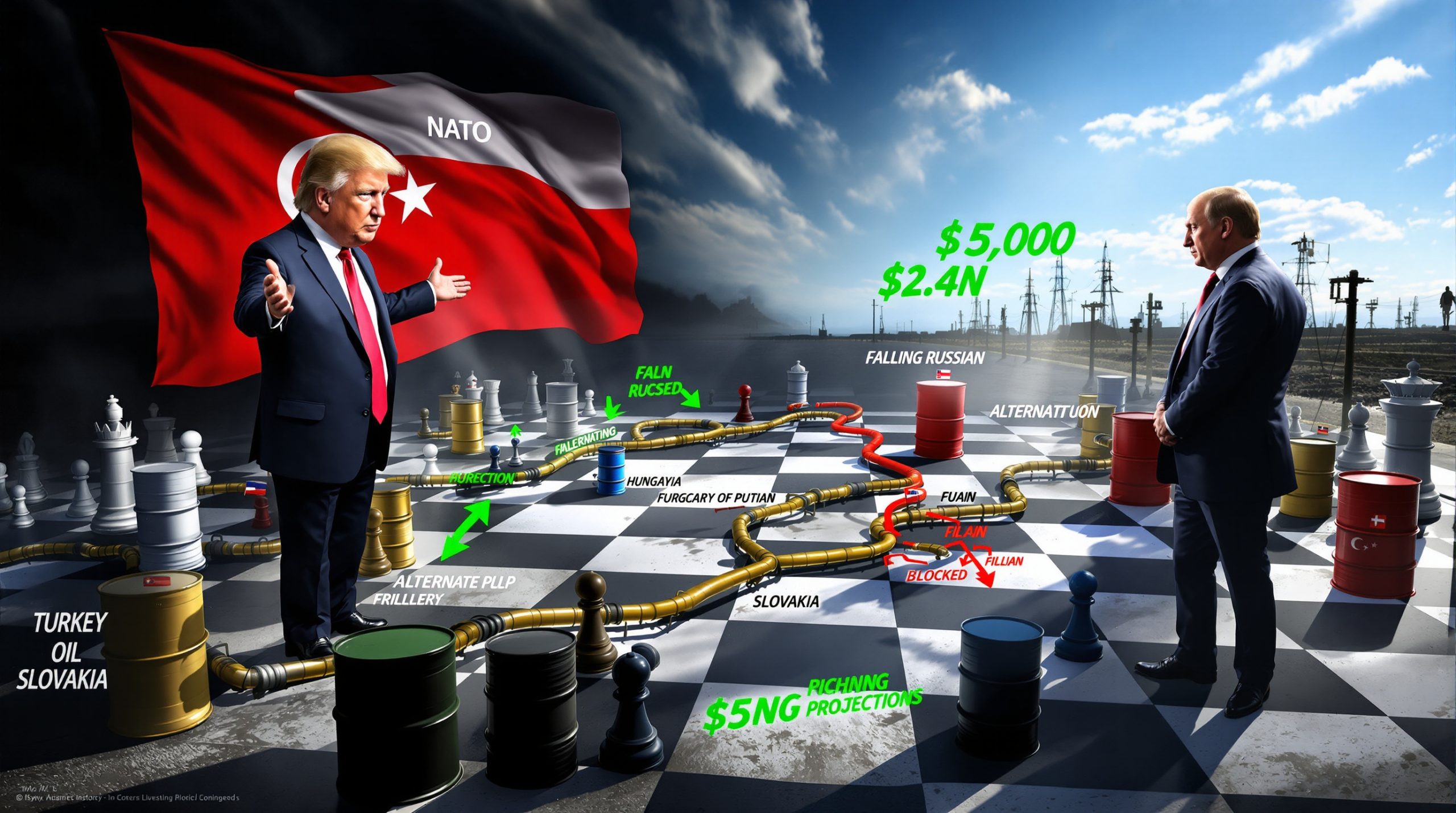What Happened to First Quantum Minerals' Panama Mining Contract?
Panama's mining landscape has experienced significant upheaval following the controversial shutdown of First Quantum Minerals' Cobre Panama copper mine. At the heart of this dispute lies a fundamental disagreement over resource ownership and national sovereignty that has escalated to become one of the most significant mining conflicts in Latin America.
In a definitive statement that sent shockwaves through the global mining industry, Panama's President José Raúl Mulino declared: "There will be no mining law contract, period." This unequivocal stance effectively closed the door on First Quantum's hopes of reinstating its previous contractual arrangement.
The president has consistently maintained that any future mining operations must acknowledge Panama's ultimate ownership of the country's mineral resources. "The mine belongs to Panama and its people," Mulino emphasized, reflecting a growing trend of resource nationalism across resource-rich developing nations.
Panama's Presidential Stance on Mining Contracts
President Mulino's position represents more than just political rhetoric—it stems from Panama's Constitutional Court ruling in 2023 that invalidated Law 9, the legislative foundation for First Quantum's mining concession. This landmark legal decision determined that the original first quantum minerals and panama mining contract violated constitutional provisions regarding national sovereignty over natural resources.
While rejecting a return to the previous contractual model, Mulino has signaled openness to a "partnership" arrangement that would fundamentally restructure the relationship between Panama and First Quantum Minerals. This nuanced approach suggests the possibility of compromise while maintaining the non-negotiable principle of Panamanian resource ownership.
The administration's position aligns with broader public sentiment, as polling indicates approximately 74% of Panamanians support state ownership of mineral resources. This popular backing strengthens the government's negotiating position and complicates First Quantum's efforts to restore operations under previous terms.
The Cobre Panama Copper Mine Shutdown
The $10 billion Cobre Panama copper mine has remained non-operational since late 2023, creating significant economic repercussions for both Panama and First Quantum Minerals. Prior to its closure, this world-class mining operation represented approximately 5% of Panama's GDP—a substantial contribution that elevated the small Central American nation's economic standing.
Located in Panama's dense rainforest approximately 120 kilometers west of Panama City, the mine was one of the largest copper development projects globally in recent decades. At full capacity, it produced approximately 350,000 metric tons of copper annually, representing roughly 1.5% of global supply.
The shutdown has had cascading effects beyond direct revenue loss. An estimated 8,000 direct jobs have been eliminated, with thousands more indirect positions affected in support industries and local communities. The province of Colón, where the mine is situated, has experienced particularly severe economic contraction, with unemployment rates nearly doubling since operations ceased.
From an environmental perspective, the mine's forced closure has created additional challenges. Rather than an orderly decommissioning process, the abrupt shutdown has necessitated emergency environmental management protocols to prevent acid mine drainage and other potential ecological impacts.
What Are the Economic Implications of the Mining Contract Dispute?
The economic fallout from the Cobre Panama shutdown extends far beyond corporate profit statements. The dispute has evolved into a case study of how mining investment strategies can rapidly transform national economic trajectories.
Impact on Panama's Economy
The elimination of the mine's 5% contribution to GDP has fundamentally altered Panama's economic outlook. The International Monetary Fund has estimated that the shutdown erased approximately 1.2% of Panama's annual growth potential, forcing significant adjustments to national development plans.
Government revenue losses have been particularly acute. The previous first quantum minerals and panama mining contract generated approximately $2.5 billion in annual revenue through direct taxation, royalties, and ancillary economic activity. This shortfall has contributed to an increase in Panama's debt-to-GDP ratio from 60% to 68% since the mine's closure.
The employment impact has created social pressures beyond direct job losses. Panama's relatively small formal economy has struggled to absorb displaced mining workers, particularly those with specialized skills. Remote mining communities have experienced population decline as workers migrate to urban centers seeking alternative employment.
Infrastructure development has also stalled in mining-adjacent regions. First Quantum had funded significant improvements to local transportation networks, healthcare facilities, and educational institutions. These community development projects have been suspended indefinitely, creating additional hardship for residents.
Financial Consequences for First Quantum Minerals
First Quantum Minerals has weathered severe financial repercussions from the contract cancellation. The company's stock price declined approximately 33% between November 2023 and April 2025, falling from $15.60 to $10.45 CAD on the Toronto Stock Exchange. This substantial devaluation reflects investor uncertainty regarding the company's long-term prospects in Panama.
The financial exposure is particularly significant given Cobre Panama's prominence in First Quantum's global portfolio. The mine previously accounted for approximately 40% of the company's total copper production and represented its largest single investment globally.
Beyond immediate revenue losses, First Quantum faces challenging strategic decisions. The company has initiated arbitration proceedings through the International Centre for Settlement of Investment Disputes (ICSID), a process that typically extends 18 months or longer. Legal expenses and potential settlement costs create additional financial uncertainty.
Industry analysts have noted parallels with other high-profile mining disputes, including Zambia's 2022 Mopani Copper Mines case, which was ultimately resolved through a government equity buyback arrangement. However, Panama's Constitutional Court ruling introduces unique legal complications that make resolution potentially more challenging than comparable disputes.
What Does "Partnership" Mean in Panama's Mining Context?
President Mulino's openness to a "partnership" rather than a traditional mining contract has sparked intense speculation about potential operational models that might satisfy both Panamanian sovereignty requirements and First Quantum's commercial interests.
Potential Partnership Models Being Considered
Several partnership frameworks have emerged as possibilities based on successful implementations in other mining jurisdictions. Chile's Codelco model offers one potential template, featuring state ownership with private operational contracts that preserve technical expertise while ensuring national control of resources.
Another potential approach mirrors Botswana's Debswana diamond venture, which maintains a 50% government stake alongside private mining expertise. This balanced ownership structure has proven remarkably stable over decades, generating substantial returns for both the Botswanan government and its corporate partners.
Tax and royalty structures represent another crucial dimension of potential partnerships. Burkina Faso's gold mining sector has implemented a 35/65 state-private revenue split that has attracted significant foreign investment while ensuring meaningful national benefit from resource extraction.
Industry experts from the Latin American Mining Institute suggest that viable partnerships in Panama's current political climate would likely require profit-sharing arrangements exceeding 50% state ownership. This threshold aligns with regional trends toward increased state participation in extractive industries.
Sovereignty and Resource Nationalism
Panama's insistence that "the mine belongs to Panama and its people" reflects a broader regional trend toward resource nationalism. This perspective views mineral deposits as national patrimony rather than commercial assets, fundamentally altering the negotiating landscape for foreign mining companies.
This sovereignty-centered approach shares characteristics with other Latin American resource policies. Ecuador's 2023 referendum banning Amazon mining and Bolivia's lithium nationalization program both prioritize state control over natural resources, even at the expense of short-term economic gains.
The practical implementation of resource nationalism varies significantly by country. Indonesia's approach to nickel production offers an instructive comparison—while banning raw ore exports in 2020, the country actively encouraged foreign investment in domestic processing facilities through favorable tax structures and infrastructure support.
Resource nationalism in Panama has been further reinforced by widespread public support. Polling indicates approximately 74% of Panamanians favor state control of mineral resources, providing a strong political mandate for maintaining sovereign ownership while potentially exploring operational partnerships.
How Does This Dispute Compare to Other Mining Conflicts?
The Cobre Panama dispute exhibits both unique characteristics and notable similarities to other global mining conflicts, offering insights into potential resolution pathways.
Global Mining Contract Disputes
Mining contract renegotiations have become increasingly common globally as resource-rich nations seek improved terms from legacy agreements. Guatemala's Escobal silver mine conflict provides an instructive comparison, with its eventual resolution through Inter-American Commission on Human Rights (IACHR) mediation establishing important regional precedents.
International arbitration statistics reveal that mining disputes require an average of 3.7 years for resolution through formal ICSID proceedings. This timeline suggests that even with First Quantum's November 2023 arbitration filing, final resolution might not be expected before mid-2027 without a negotiated settlement.
The dispute's scale sets it apart from many comparable conflicts. At $10 billion, First Quantum's investment in Cobre Panama represents one of the largest single mining investments in Latin American history. This substantial financial exposure creates strong incentives for both parties to find a workable solution despite political and legal complexities.
Unlike many mining disputes centered primarily on financial terms, Panama's conflict focuses fundamentally on constitutional interpretation and national sovereignty. This principled foundation makes compromise potentially more difficult than disputes based purely on economic considerations.
Environmental and Social Governance Factors
According to industry research, approximately 62% of global copper mines face community resistance related to environmental or social concerns. Cobre Panama has experienced similar challenges, with environmental groups highlighting concerns about the mine's location in an ecologically sensitive rainforest region.
Water management has emerged as a particularly contentious environmental issue. The mine's operations require substantial water resources in a country increasingly experiencing climate change-related water stress. Future operational agreements would likely require enhanced environmental safeguards and community water access guarantees.
Social license challenges extend beyond environmental concerns. Local community development projects were previously funded through First Quantum's corporate social responsibility initiatives. The abrupt cessation of these programs has created additional community tensions that complicate potential reopening scenarios.
Environmental, Social, and Governance (ESG) considerations have increasingly influenced investor perspectives on the dispute. Approximately $200 million in ESG-focused investment has reportedly been diverted from Panamanian projects since the controversy began, creating additional economic pressure for resolution.
What Are the Potential Paths Forward?
Resolution of the Cobre Panama dispute will require creative approaches that satisfy constitutional requirements while preserving economic benefits for all stakeholders.
Negotiation Scenarios
Three primary scenarios have emerged as potential paths forward. The first involves a fundamentally restructured partnership with majority Panamanian ownership while preserving First Quantum's operational management. This arrangement would mirror successful state-private partnerships in countries like Chile and Botswana.
A second possibility involves transitional management, where First Quantum would operate the mine under a fixed-term contract while training Panamanian personnel to eventually assume full operational control. Ghana's Ahafo mine renegotiation followed a similar pattern, with Newmont increasing local employment by 40% as part of a transition toward greater national participation.
The least likely scenario—but one that cannot be dismissed entirely—involves complete nationalization with fair compensation to First Quantum. This approach would satisfy nationalist political objectives but presents significant technical challenges given Panama's limited experience managing large-scale mining operations.
The negotiation timeline is influenced by both legal and political factors. Panama's next general election in 2029 creates a natural horizon for the current administration's mining policy. However, economic pressures may necessitate more rapid resolution as revenue shortfalls impact government services.
Economic Incentives for Resolution
Panama faces strong economic incentives to restart copper production. Beyond direct revenue, the mine's operations supported numerous ancillary businesses, from transportation to catering services. The multiplier effect of mining activity extended throughout Panama's economy, creating pressure for resolution despite political complexities.
First Quantum's incentives for compromise are equally compelling. With 40% of its global copper production previously coming from Cobre Panama, the company faces significant ongoing losses while the mine remains idle. Shareholder pressure for resolution continues to mount as the dispute extends into its second year.
International factors may also influence negotiations. Panama's participation in trade agreements like the US-Central America Free Trade Agreement (CAFTA) creates potential leverage points. The Center for Strategic and International Studies has noted that bilateral trade arrangements could exert pressure on Panama to resolve the dispute in accordance with international investment protection standards.
Fiscal incentives could play a crucial role in facilitating agreement. Indonesia's approach to encouraging domestic mineral processing through 10-year tax holidays offers a potential model for restructuring Panama's mining fiscal regime while preserving national ownership principles.
What Does This Mean for the Global Copper Market?
The Cobre Panama shutdown has created ripple effects throughout global copper markets, highlighting the mine's significance in international supply chains.
Copper Supply Chain Implications
Cobre Panama's annual production of approximately 350,000 metric tons represented 1.5% of global copper supply—a significant percentage for a single mining operation. This supply gap has contributed to copper price increases of approximately 12%, from $8,900 to $9,980 per ton since the shutdown began.
The supply disruption occurs against a backdrop of projected global copper deficits. Industry analysts at CRU Group have estimated that the global market faces a potential 8.4 million ton supply shortfall by 2026 as electrical vehicle production and renewable energy expansion drive unprecedented demand growth.
Alternative supply sources have partially offset Cobre Panama's closure. Congo's Kamoa-Kakula expansion is adding 500,000 tons of annual capacity, while Chilean producers have increased utilization rates at existing facilities. However, these adjustments haven't fully compensated for lost Panamanian production.
The shutdown has particularly affected Chinese smelting operations, with utilization rates reportedly dropping from 85% to 78% as concentrate supplies tightened. This throughput reduction has further constrained refined copper availability for manufacturing sectors globally.
Future of Copper Mining in Panama
Despite the current impasse, Panama's exceptional copper resources ensure continued interest in developing the country's mining stocks guide. The Cobre Panama deposit contains estimated reserves exceeding 3.1 billion tons at 0.38% copper grade—a world-class resource that will remain economically attractive under various price scenarios.
Regulatory reform appears inevitable regardless of the specific resolution with First Quantum. Panama's government has indicated intentions to develop a comprehensive mining code that clearly establishes state ownership while providing transparent parameters for potential operators.
Other international mining companies have maintained a cautious interest in Panama despite the current dispute. However, substantive new investment appears unlikely until the First Quantum situation reaches resolution and establishes clear precedent for foreign mining operations under Panama's evolving regulatory framework.
FAQ About First Quantum Minerals and Panama
What is the current status of First Quantum's operations in Panama?
The Cobre Panama mine remains non-operational since late 2023 following Panama's Constitutional Court ruling invalidating the mining contract. First Quantum maintains a reduced workforce focused on environmental management and asset preservation rather than production activities.
The company has initiated arbitration proceedings through the International Centre for Settlement of Investment Disputes (ICSID), seeking either reinstatement of operational rights or significant compensation for its $10 billion investment. This legal process typically extends 18 months or longer, meaning resolution through this channel is unlikely before 2025.
First Quantum technically maintains ownership of physical assets including processing facilities and equipment, though the underlying mineral rights have reverted to the Panamanian government. This creates a complex legal situation where equipment ownership and operational rights are dissociated.
How does this dispute affect global copper prices?
Copper prices have increased approximately 12% since the Cobre Panama shutdown, reflecting the significant supply impact of removing 350,000 annual tons from global markets. This price movement has been somewhat moderated by slower Chinese economic growth during the same period.
Market analysts project continued upward price pressure through 2025 unless production resumes or significant new capacity enters production elsewhere. The dispute coincides with growing copper demand for energy transition technologies, creating a particularly tight supply-demand balance.
Investment in copper exploration has accelerated in response to higher prices, with junior mining companies reporting increased funding availability for copper-focused projects. However, the typical 7-10 year development timeline for new copper mines means these investments won't affect near-term supply constraints.
What are First Quantum's options if no new agreement is reached?
First Quantum's primary recourse remains international arbitration, where the company would seek compensation for its investment under bilateral investment protection treaties. Success in this venue could result in a substantial financial award, though collecting such awards from sovereign nations has proven challenging in similar cases.
Asset disposition represents another option, with the company potentially selling infrastructure and equipment to the Panamanian government or third parties. However, the specialized nature of mining equipment limits potential buyers, creating valuation challenges.
The company could also pursue a holding strategy, maintaining minimal operations while awaiting more favorable political circumstances. This approach carries significant carrying costs but preserves the possibility of eventual operational restoration under a future administration.
Expert Insights on Mining Contracts and Sovereignty
International mining analysts have increasingly recognized resource nationalism as a structural rather than cyclical trend. Countries with valuable mineral deposits are fundamentally reconsidering the traditional concession model in favor of arrangements that guarantee greater national participation and control.
Legal experts note that Panama's constitutional framework provides particularly strong protection for national resource sovereignty. Unlike countries where resource contracts receive special legal status, Panama's constitution explicitly establishes minerals as inalienable national patrimony, creating significant challenges for foreign operators.
Investment community perspectives remain divided on the dispute's implications. Some analysts view Panama's actions as part of a concerning regional trend toward resource nationalism, while others interpret the situation as a specific response to perceived inequities in the original first quantum minerals and panama mining contract rather than a broader anti-investment stance.
Conclusion: The Future of Mining in Panama
The resolution of the First Quantum dispute will establish critical precedents for Panama's mining sector development. While full restoration of the previous arrangement appears highly unlikely, creative partnership structures could potentially satisfy both constitutional requirements and commercial viability considerations.
Panama faces the challenge of balancing legitimate sovereignty concerns with the practical reality that mineral development requires
Want to Identify the Next Major Mineral Discovery Before the Market?
Discover why significant mineral discoveries can lead to exceptional returns by exploring Discovery Alert's dedicated discoveries page, where our proprietary Discovery IQ model analyses and delivers real-time alerts on ASX mineral announcements, giving subscribers a crucial market advantage.




